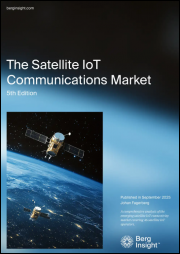
|
시장보고서
상품코드
1675626
세계의 HTS(High-throughput Satellite) 시장 : 유형별, 용도별, 지역별(2025-2033년)High-throughput Satellite Market Report by Type (Payload, Structure, Power System, Attitude Control System, Propulsion System), Application (Broadband, Mobility, Enterprise, Government, Cellular Backhaul, Broadcast), and Region 2025-2033 |
||||||
IMARC Group은 2024년 HTS(High-throughput Satellite) 세계 시장 규모가 142억 달러에 달했으며, 2025년부터 2033년까지 17.25%의 연평균 성장률(CAGR)로 성장하여 2033년에는 637억 달러에 달할 것으로 예상하고 있습니다. 광대역 연결에 대한 수요 증가, 위성 기술의 지속적인 발전, 모바일 기기의 보급이 시장 성장을 주도하고 있습니다.
HTS(High Throughput Satellite)는 궤도 스펙트럼 용량이 큰 위성의 일종으로, 비트당 비용을 크게 절감할 수 있으며, 여러 개의 좁은 초점 스팟 빔에 걸쳐 주파수를 재사용할 수 있는 스팟 빔 기술을 통해 실현됩니다. 이 위성에서는 더 좁은 영역을 커버하고 별도의 신호를 제공하는 스팟 빔을 통해 높은 수준의 주파수 재사용을 보장하여 더 높은 스펙트럼 효율과 속도를 제공합니다. 보안, 확장성, 신뢰성 향상, 네트워크 지연 최소화 등 여러 가지 이점이 있습니다. 결과적으로, 이러한 위성은 광대역 서비스에서 데이터 전송의 대용량화에 기여하고 있습니다.
HTS(High-throughput Satellite) 시장 동향 :
시장 성장의 주요 요인은 IT 및 ITES, 군사 및 방위, IT 및 통신 등 다양한 최종 사용 산업에서 HTS(High-throughput Satellite) 컨스텔레이션의 활용이 크게 증가하고 있기 때문입니다. 이는 사물인터넷(IoT)에서 위성 통신의 채택이 증가하고 연결 프레임워크가 개선된 데 기인합니다. 이 외에도 VSAT, satcom-on-the-move, satcom-on-the-pause를 포함한 수많은 제품 혁신이 시장에 활력을 불어넣고 있습니다. 또한, 급속한 디지털화로 인해 인터넷 대역폭에 대한 수요가 증가하고 있는 것도 이 시장의 큰 성장 요인으로 작용하고 있습니다. 이 외에도 더 빠른 데이터 전송이 필요한 클라우드 기반 게임, 미디어 스트리밍 및 네트워킹의 인기가 높아지면서 시장에 긍정적인 영향을 미치고 있습니다. 이와는 별도로, 기내 모바일 연결에 대한 수요 증가로 인해 HTS(High-throughput Satellite)의 사용이 확대되고 있습니다. 또한, 원격지에서의 인터넷 보급을 위한 위성 네트워크의 지속적인 기술 발전은 시장 전망을 밝게 하고 있습니다. 시장 성장을 가속하는 다른 요인으로는 고속 5G 네트워크의 등장, 급속한 도시화 및 산업화, 주요 기업의 광범위한 조사 개발 활동 등을 들 수 있습니다.
본 보고서에서 다룬 주요 질문
- 2024년 세계 HTS(High-throughput Satellite) 시장 규모는?
- 2025-2033년 세계 HTS(High-throughput Satellite) 시장의 예상 성장률은?
- 세계 HTS(High-throughput Satellite) 시장을 이끄는 주요 요인은?
- 코로나19가 세계 HTS(High-throughput Satellite) 시장에 미치는 영향은?
- 세계 HTS(High-throughput Satellite) 시장의 유형별 분류는?
- 세계 HTS(High-throughput Satellite) 시장의 용도별 분석은?
- 세계 HTS(High-throughput Satellite) 시장의 주요 지역은?
- 세계 HTS(High-throughput Satellite) 시장의 주요 기업은?
목차
제1장 서문
제2장 조사 범위와 조사 방법
- 조사 목적
- 이해관계자
- 데이터 소스
- 1차 정보
- 2차 정보
- 시장 추정
- 보텀업 접근
- 톱다운 접근
- 조사 방법
제3장 주요 요약
제4장 서론
- 개요
- 주요 업계 동향
제5장 세계의 HTS(High-throughput Satellite) 시장
- 시장 개요
- 시장 실적
- COVID-19의 영향
- 시장 예측
제6장 시장 분석 : 유형별
- 페이로드
- 구조
- 전력 시스템
- 자세 제어 시스템
- 추진 시스템
제7장 시장 분석 : 용도별
- 브로드밴드
- 모빌리티
- 기업
- 정부
- 셀룰러 백홀
- 방송
제8장 시장 분석 : 지역별
- 북미
- 미국
- 캐나다
- 아시아태평양
- 중국
- 일본
- 인도
- 한국
- 호주
- 인도네시아
- 기타
- 유럽
- 독일
- 프랑스
- 영국
- 이탈리아
- 스페인
- 러시아
- 기타
- 라틴아메리카
- 브라질
- 멕시코
- 기타
- 중동 및 아프리카
- 시장 분석 : 국가별
제9장 SWOT 분석
- 개요
- 강점
- 약점
- 기회
- 위협
제10장 밸류체인 분석
제11장 Porter의 Five Forces 분석
- 개요
- 바이어의 교섭력
- 공급 기업의 교섭력
- 경쟁 정도
- 신규 진출업체의 위협
- 대체품의 위협
제12장 가격 분석
제13장 경쟁 구도
- 시장 구조
- 주요 기업
- 주요 기업 개요
- Hughes Network Systems LLC(EchoStar Corporation)
- Thales Alenia Space(Thales Group, Leonardo S.p.A.)
- The Boeing Company
The global high-throughput satellite market size reached USD 14.2 Billion in 2024. Looking forward, IMARC Group expects the market to reach USD 63.7 Billion by 2033, exhibiting a growth rate (CAGR) of 17.25% during 2025-2033. The increasing demand for broadband connectivity, ongoing advancements in satellite technology, and the proliferation of mobile devices are primarily driving the market's growth.
High-throughput satellite (HTS) refers to a type of satellite with a higher capacity of the orbital spectrum, which reduces the cost per bit significantly. HTS is enabled by the spot beam technology that enables the re-use of frequencies across multiple narrow-focused spot beams. With these satellites, a high level of frequency re-use is ensured with spot beams that cover smaller regions and provide separate signals, thus allowing for higher spectral efficiency and speed. They provide several advantages, including improved security, scalability, and reliability, along with minimal network latency. As a result, these satellites are instrumental in providing extensive capacity for data transfers in broadband services.
High-throughput Satellite Market Trends:
The market is majorly driven by a considerable rise in the utilization of high-throughput satellite constellations in a wide range of end-use industries, such as IT and ITES, military and defense, and telecommunication. This can be attributed to the increasing adoption of satellite communication in the Internet of Things (IoT) for improved connectivity framework. In addition to this, numerous product innovations, including VSAT, satcom-on-the-move, and satcom-on-the-pause, are providing an impetus to the market. Moreover, rapid digitization resulting in a higher demand for internet bandwidth is also acting as a significant growth-inducing factor for the market. Besides this, the rising popularity of cloud-based gaming, media streaming, and networking that require faster data transfer are impacting the market positively. Apart from this, the escalating demand for in-flight mobile connectivity is resulting in a higher uptake of high-throughput satellites. Furthermore, continual technological advancements in satellite networks for internet penetration in remote regions are creating a positive outlook for the market. Some of the other factors bolstering the market growth include the advent of high-speed 5G network, rapid urbanization and industrialization, and extensive research and development (R&D) activities conducted by key players.
Key Market Segmentation:
Breakup by Type:
- Payload
- Structure
- Power System
- Attitude Control System
- Propulsion System
Breakup by Application:
- Broadband
- Mobility
- Enterprise
- Government
- Cellular Backhaul
- Broadcast
Breakup by Region:
- North America
- United States
- Canada
- Asia-Pacific
- China
- Japan
- India
- South Korea
- Australia
- Indonesia
- Others
- Europe
- Germany
- France
- United Kingdom
- Italy
- Spain
- Russia
- Others
- Latin America
- Brazil
- Mexico
- Others
- Middle East and Africa
Competitive Landscape:
The competitive landscape of the industry has also been examined along with the profiles of the key players being Hughes Network Systems LLC (EchoStar Corporation), Thales Alenia Space (Thales Group, Leonardo S.p.A.) and The Boeing Company. Kindly, note that this only represents a partial list of companies, and the complete list has been provided in the report.
Key Questions Answered in This Report
- 1.What was the size of the global high-throughput satellite market in 2024?
- 2.What is the expected growth rate of the global high-throughput satellite market during 2025-2033?
- 3.What are the key factors driving the global high-throughput satellite market?
- 4.What has been the impact of COVID-19 on the global high-throughput satellite market?
- 5.What is the breakup of the global high-throughput satellite market based on the type?
- 6.What is the breakup of the global high-throughput satellite market based on application?
- 7.What are the key regions in the global high-throughput satellite market?
- 8.Who are the key players/companies in the global high-throughput satellite market?
Table of Contents
1 Preface
2 Scope and Methodology
- 2.1 Objectives of the Study
- 2.2 Stakeholders
- 2.3 Data Sources
- 2.3.1 Primary Sources
- 2.3.2 Secondary Sources
- 2.4 Market Estimation
- 2.4.1 Bottom-Up Approach
- 2.4.2 Top-Down Approach
- 2.5 Forecasting Methodology
3 Executive Summary
4 Introduction
- 4.1 Overview
- 4.2 Key Industry Trends
5 Global High-throughput Satellite Market
- 5.1 Market Overview
- 5.2 Market Performance
- 5.3 Impact of COVID-19
- 5.4 Market Forecast
6 Market Breakup by Type
- 6.1 Payload
- 6.1.1 Market Trends
- 6.1.2 Market Forecast
- 6.2 Structure
- 6.2.1 Market Trends
- 6.2.2 Market Forecast
- 6.3 Power System
- 6.3.1 Market Trends
- 6.3.2 Market Forecast
- 6.4 Attitude Control System
- 6.4.1 Market Trends
- 6.4.2 Market Forecast
- 6.5 Propulsion System
- 6.5.1 Market Trends
- 6.5.2 Market Forecast
7 Market Breakup by Application
- 7.1 Broadband
- 7.1.1 Market Trends
- 7.1.2 Market Forecast
- 7.2 Mobility
- 7.2.1 Market Trends
- 7.2.2 Market Forecast
- 7.3 Enterprise
- 7.3.1 Market Trends
- 7.3.2 Market Forecast
- 7.4 Government
- 7.4.1 Market Trends
- 7.4.2 Market Forecast
- 7.5 Cellular Backhaul
- 7.5.1 Market Trends
- 7.5.2 Market Forecast
- 7.6 Broadcast
- 7.6.1 Market Trends
- 7.6.2 Market Forecast
8 Market Breakup by Region
- 8.1 North America
- 8.1.1 United States
- 8.1.1.1 Market Trends
- 8.1.1.2 Market Forecast
- 8.1.2 Canada
- 8.1.2.1 Market Trends
- 8.1.2.2 Market Forecast
- 8.1.1 United States
- 8.2 Asia-Pacific
- 8.2.1 China
- 8.2.1.1 Market Trends
- 8.2.1.2 Market Forecast
- 8.2.2 Japan
- 8.2.2.1 Market Trends
- 8.2.2.2 Market Forecast
- 8.2.3 India
- 8.2.3.1 Market Trends
- 8.2.3.2 Market Forecast
- 8.2.4 South Korea
- 8.2.4.1 Market Trends
- 8.2.4.2 Market Forecast
- 8.2.5 Australia
- 8.2.5.1 Market Trends
- 8.2.5.2 Market Forecast
- 8.2.6 Indonesia
- 8.2.6.1 Market Trends
- 8.2.6.2 Market Forecast
- 8.2.7 Others
- 8.2.7.1 Market Trends
- 8.2.7.2 Market Forecast
- 8.2.1 China
- 8.3 Europe
- 8.3.1 Germany
- 8.3.1.1 Market Trends
- 8.3.1.2 Market Forecast
- 8.3.2 France
- 8.3.2.1 Market Trends
- 8.3.2.2 Market Forecast
- 8.3.3 United Kingdom
- 8.3.3.1 Market Trends
- 8.3.3.2 Market Forecast
- 8.3.4 Italy
- 8.3.4.1 Market Trends
- 8.3.4.2 Market Forecast
- 8.3.5 Spain
- 8.3.5.1 Market Trends
- 8.3.5.2 Market Forecast
- 8.3.6 Russia
- 8.3.6.1 Market Trends
- 8.3.6.2 Market Forecast
- 8.3.7 Others
- 8.3.7.1 Market Trends
- 8.3.7.2 Market Forecast
- 8.3.1 Germany
- 8.4 Latin America
- 8.4.1 Brazil
- 8.4.1.1 Market Trends
- 8.4.1.2 Market Forecast
- 8.4.2 Mexico
- 8.4.2.1 Market Trends
- 8.4.2.2 Market Forecast
- 8.4.3 Others
- 8.4.3.1 Market Trends
- 8.4.3.2 Market Forecast
- 8.4.1 Brazil
- 8.5 Middle East and Africa
- 8.5.1 Market Trends
- 8.5.2 Market Breakup by Country
- 8.5.3 Market Forecast
9 SWOT Analysis
- 9.1 Overview
- 9.2 Strengths
- 9.3 Weaknesses
- 9.4 Opportunities
- 9.5 Threats
10 Value Chain Analysis
11 Porters Five Forces Analysis
- 11.1 Overview
- 11.2 Bargaining Power of Buyers
- 11.3 Bargaining Power of Suppliers
- 11.4 Degree of Competition
- 11.5 Threat of New Entrants
- 11.6 Threat of Substitutes
12 Price Analysis
13 Competitive Landscape
- 13.1 Market Structure
- 13.2 Key Players
- 13.3 Profiles of Key Players
- 13.3.1 Hughes Network Systems LLC (EchoStar Corporation)
- 13.3.1.1 Company Overview
- 13.3.1.2 Product Portfolio
- 13.3.2 Thales Alenia Space (Thales Group, Leonardo S.p.A.)
- 13.3.2.1 Company Overview
- 13.3.2.2 Product Portfolio
- 13.3.3 The Boeing Company
- 13.3.3.1 Company Overview
- 13.3.3.2 Product Portfolio
- 13.3.3.3 Financials
- 13.3.3.4 SWOT Analysis
- 13.3.1 Hughes Network Systems LLC (EchoStar Corporation)
Kindly, note that this only represents a partial list of companies, and the complete list has been provided in the report.



















